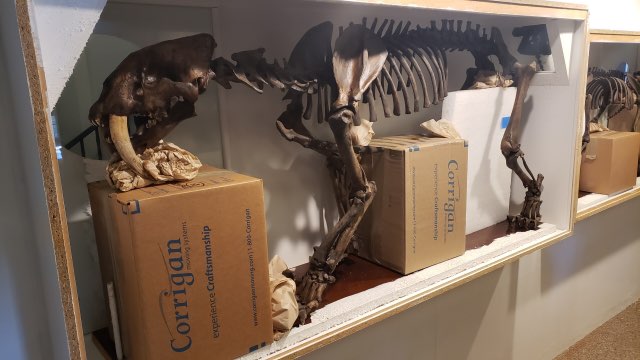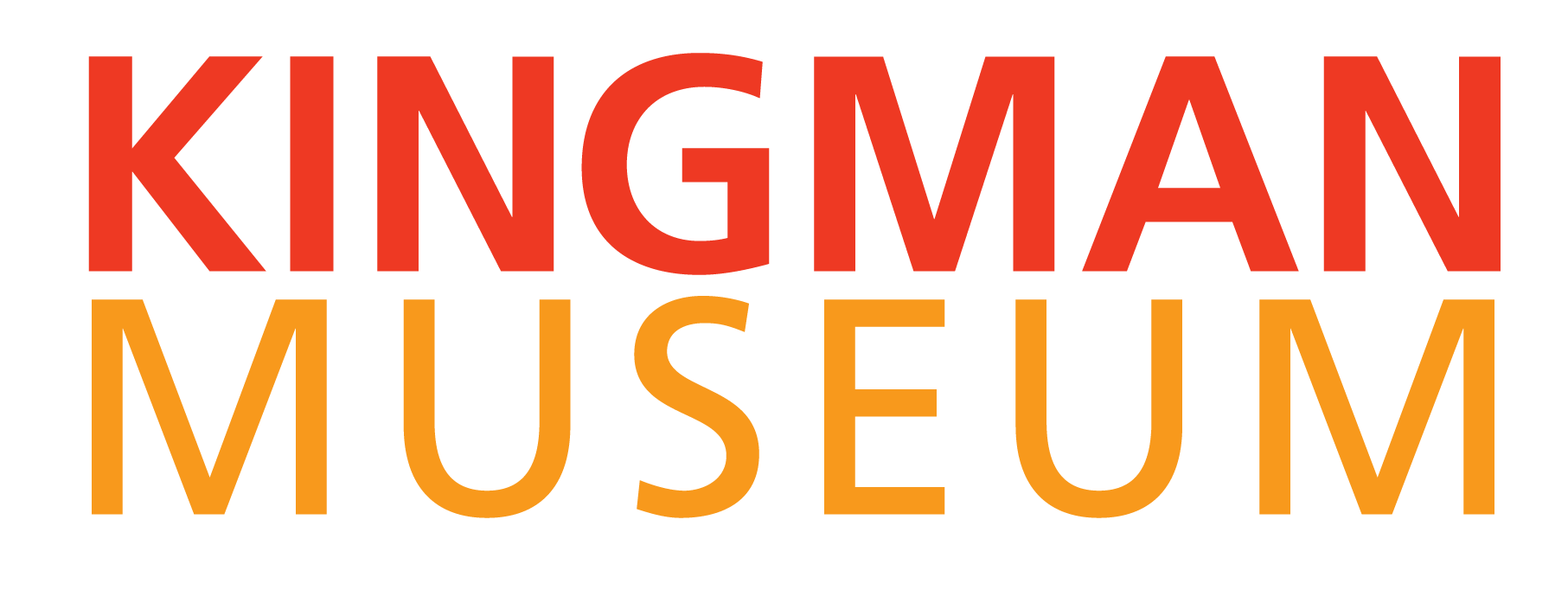Case Study: Kingman Museum
Challenge:
- Gracefully pack, move and deliver all elements and collections of the Kingman Museum to a climate-controlled warehouse for extended storage
- Limited staff and volunteers available to assist due to Covid-19 restrictions
- Thoroughly catalog each item throughout move process
Project Goal:
- Safely protect and transport museum artifacts
- Make certain all pieces are appropriately protected for long-term storage
- Engage with museum authorities to ensure pieces are transported in the best possible way
Scope of Services:
- Custom handling and crating for one-of-a-kind, scarce, intricate and valuable museum artifacts
- Relocation of all pieces to storage warehouse maintained by the museum
- Protect items from any moisture or distressing situation while being stored
Solution:
“You have to speak the language of your customer,” said Steve Wayward, while recollecting his adventure working with the Kingman Museum. “They reached out to Corrigan when they needed to relocate their entire museum. They were aware of our name, and that we have supplied successful solutions for similar museums in the area. After the initial discussion with them, I immediately knew what we could offer them, and I believe they knew right away, as well. Sometimes it is that first interaction that lets you know the partnership is a good fit. In this case, it was.”
As the Director of Commercial Projects, Steve has participated in a number of of museum moves, although, this museum move shifted into something a bit different from most previous projects. “They have an incredibly eclectic collection,” explained Wayward. “There’s everything from Native American artifacts to taxidermy. Working with such a extensive range of pieces proved to be an interesting challenge for our team, so we had to clearly collaborate with the experts at the museum. They identify with their artifacts best, and this was certainly an occasion where our team relied on them for insights into the best way to proceed. Given their intimate understanding, our team was able to demonstrate solutions for moving the museum. That cooperation proved to be crucial to this move being successful.”

The collective spirit of this move started right away. Once the museum was presented the moving quote for services, Steve collaborated with the museum team to identify projects that the museum staff could handle packing on their own. With Covid-19 restrictions, that meant a reduced number of volunteers and employees were available to help complete the project. “Inspiring them with the right knowledge and materials allowed the museum’s team to align the scope of services with their budget”, stated Wayward. “We provided the technical direction, tools, resources and materials. They provided the artifact insights and packing labor for a large part of the museum relocation. It worked well, not only keeping the project in line with their budget, but the staff was so well-versed, we couldn’t have packed some items any better. With the right resources and knowledgeable people in place, you can realize so much with a small team. Actually, by their staff helping, they cut their quote almost in half. They were great to work with.”
Following additional collaboration, a slow and steady method was agreed on. Generally speaking, commercial relocations are thoroughly packed, then relocated to their new destination. Here, packing and then moving specific areas of the museum, little by little, proved to be the ideal method. Over the period of 4 weeks, Corrigan had 3 employees on site every day to work along with the Kingman team. Moving systematically throughout the storage areas and exhibits, each section was packed and transported before moving onto the next area.
Brian Stickler, warehouseman for the Corrigan Grand Rapids branch, was one of the Corrigan employees on site for the project. “Generally museums don’t permit you to touch their artifacts, so this was a really neat opportunity. It is not everyday you can touch a real taxidermy of a polar bear,” he explained. “It was also a great opportunity to see and handle the pieces in the museum storage and archives. These items were off exhibit that the general public cannot view.”
The most unforgettable item handled during the relocation: “A saber-tooth tiger from the original excavation of the LaBrea Tar Pits,” said Stickler. “It took a minute to recognize the most favorable solution to support and carefully handle it. Its skeleton is mounted inside of an open-front display case. Our plan was to place book boxes under her for support, and then pad around and under its teeth with paper. We ended up surrounding the display in foam and placed it inside of a sofa carton. We used the same process for the dire wolf skeleton, and they both transported perfectly.”

However, not all artifacts were large though. What established itself to be one of the biggest challenges collections to move actually included some of the smallest items. Within a storage cabinet laid approximately 20 trays of all kinds of animal eggs. “There were large ostrich eggs as well as eggs about the size of a dime. We had to wear gloves of course, but those were certainly some of the most tiniest items I have ever handled,” noted Stickler.
How is it that you move such a delicate and fragile collection? “At about 5 miles an hour,” laughed Stickler. “To begin, we carefully put down protective material and padding inside of the truck. Then we placed each tray of eggs flat inside. We had two crew members in personal cars, escorting our semi-truck with their flashers on. Similar to a processional, traveling literally 5 mph from the museum to their warehouse storage location. It was tense over every small bump, but every specimen was safely moved.”
Whether it was rocks, minerals, fossils, meteorites, taxidermy and everything along the way, each and every article needed to be carefully organized for the museum records. “At the end of the day, that proved to be the predominant challenge of,” recalled Stickler. “We kept precise records of every item we moved, what it was packed or wrapped in, and the final location inside of the storage warehouse. Since the museum is storing all belongings until they find a new location, they must know the exact location of each artifact. It was a verbose job, but we were able to accomplish exactly what the museum was looking for.”
When the entire museum’s contents were settled into the storage facility, Corrigan protected all boxes and artifacts using sheets of plastic. The objective was protecting the items from moisture, with visibility for staff.
Currently the museum remains closed, with the artifacts in storage until a permanent location is determined. “I am fairly certain that when the museum procures a new building, Corrigan will be there,” said Wayward. “I’m anxiously looking forward to working with them again and seeing how the museum can grow and unfold within a new space.”
Begin planning your worry-free move with our resource library
Browse through our hand-picked collection of resource materials selected to assist with your move planning. Our Moving Tools include how to pack videos, moving checklists, and important documents.
- Farmington
- |
- Clawson
- |
- Rochester Hills
- |
- Trenton
- |
- Detroit
- |
- Beverly Hills
- |
- Berkley
- |
- Sterling Heights
- |
- Northville
- |
- Troy
- |
- Royal Oak
- |
- Grosse Pointe
- |
- Saint Clair Shores
- |
- Livonia
- |
- Dearborn
- |
- Novi
- |
- Warren
- |
- Westland
- |
- Ferndale

